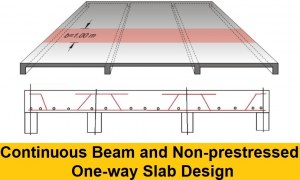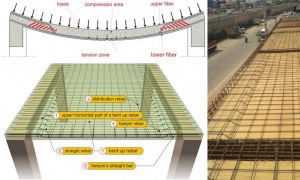🕑 Reading time: 1 minute
The detailing of reinforcement is as important as the analysis and design of any RCC members. Specially it is true in the design of structures against the SEISMIC forces. The most and very important aspect of detailing is well documented in the text book on “SEISMIC DESIGN OF REINFORCED CONCRETE AND MASONRY BUILDINGS by T.Paulay and M.J.N.Priestley. The text extraction is given below for the structural engineers who need to know more about the importance of the above issue.Page: 157:
The spacing of the transverse reinforcement is as important as the quantity to be provided. For this reason, recommended maximum spacings of sets of transverse ties along a member, required for four specific purposes, are summarized here.
1. To provide shear resistance: Except as set out in section 3.3.2(a)(vii):
In beams s?0.5d or 600mm(24”)
In columns s?0.75h or 600mm(24”)
In walls s?2.5bw or 450mm(18”)
2. To stabilize compression bars in plastic Regions: As described in section 4.5.4 for beams, but also applicable to bars with diameters db in columns and walls[ Section 5.4(e)]:
s?6.0db, or s?d/4, s? 150mm(6”)
3. To provide confinement of compressed concrete in potential plastic regions: As described in sections 3.6.1(a),4.6.1(e)M AND 5.4.3(E).
sh? bc/3 , sh ? hc/3 , sh ?6 db, sh?180mm(7”).
4. At Lapped splice : As described in Section 3.6.29B),4.6.10 and 4.6.11(f) for the end regions of columns where plastic hinges are not expected to occur:
s?8.0db, s?200mm(8”).
Page:208:
The diameter of stirrup ties should not be less than 6mm(0.25”) and the area of one leg of stirrup tie in the direction of potential buckling of longitudinal bars should not be less than
 For design purpose it is convenient to rearrange the above equation in the form:
For design purpose it is convenient to rearrange the above equation in the form:Ate/s = ? Ab fy /1600 fyt (mm^2/mm)
Where Ab is the sum of the areas of the longitudinal bars reliant on the tie, including the tributary area of any bars exempted from being tied in accordance with the proceding section.
Ate is the area of the stirrup tie in mm^2.
fy is the yield strength of longitudinal bars.
fyt is the yield strength of tie bars
Page 128:
Because of the reversal of shear forces in members affected by earthquakes, the placing of stirrups at an angle other than 90? to the axis of such members is generally impractical.
The choice of the angle 45 ? for the plane of the diagonal tension failure in the region of potential plastic is a compromise.
Please note that in IS 13920 it is not recommended to use single bent up bars.
Minimum shear reinforcement:
Current codes (NewZeland) require the provision of minimum amount of shear reinforcement in the range of 0.0015 ?Av/bwsC0.0020 in members affected by earthquake forces.
ii) Spacing of stirrups: To ensure that potential diagonal tension failure planes are crossed by sufficient sets of stirrups, spacing limitations such as set out below, have been widely used. The spacing s should not exceed:
1. In beams:
In general :0.5d or 600mm(24”)
When (vi-vc) > 0.07 f’c: 0.25d or 300mm(12”).
2. In columns:
When Pu/Ag?0.12 f’c; as in beams
When Pu/Ag > 0.12 f’c: 0.75’ or 800mm(24”).
3. In walls,
2.5 times the wall thickness or 450mm(18”).



